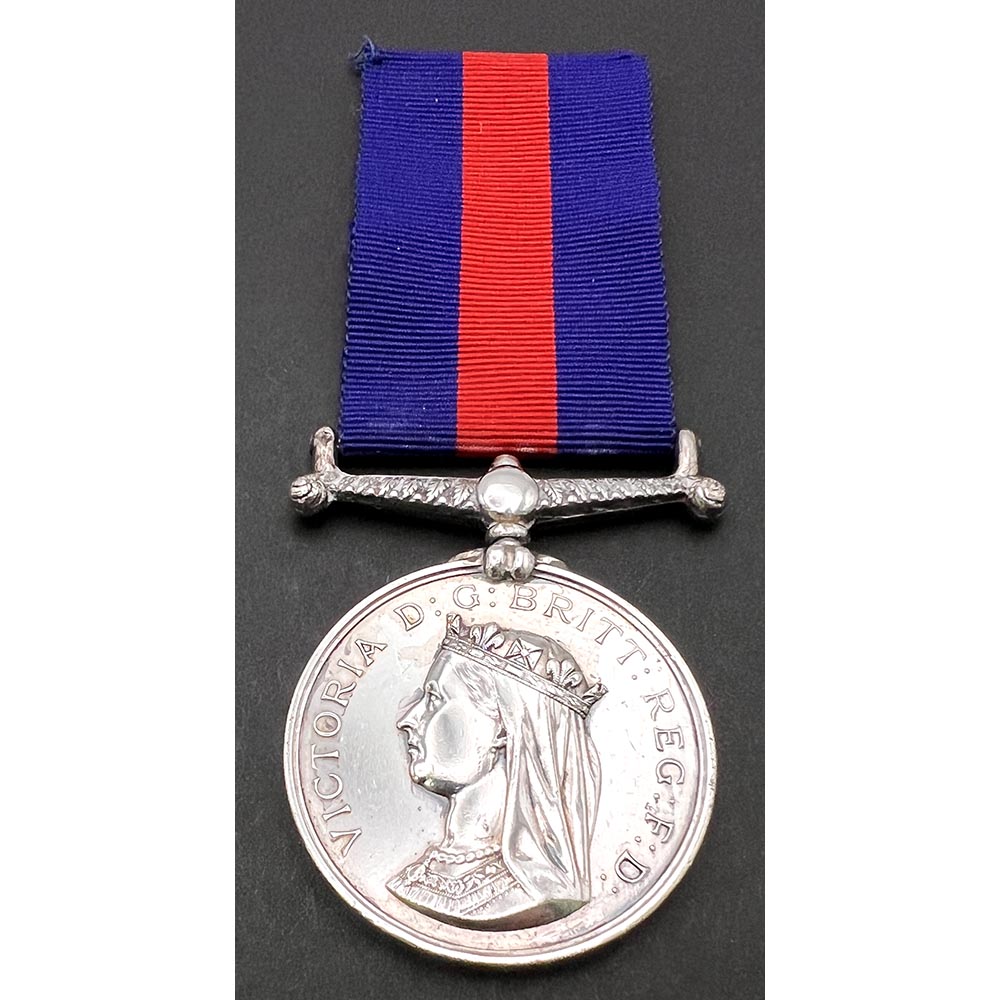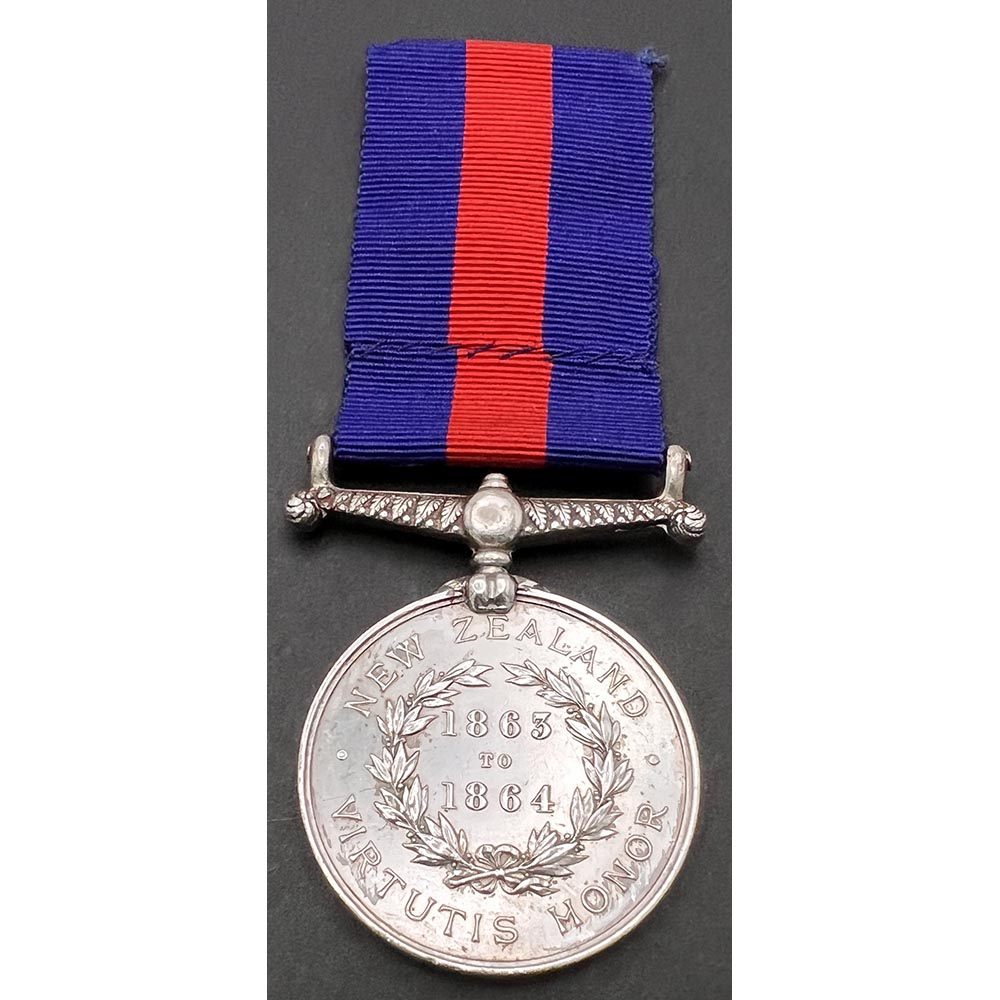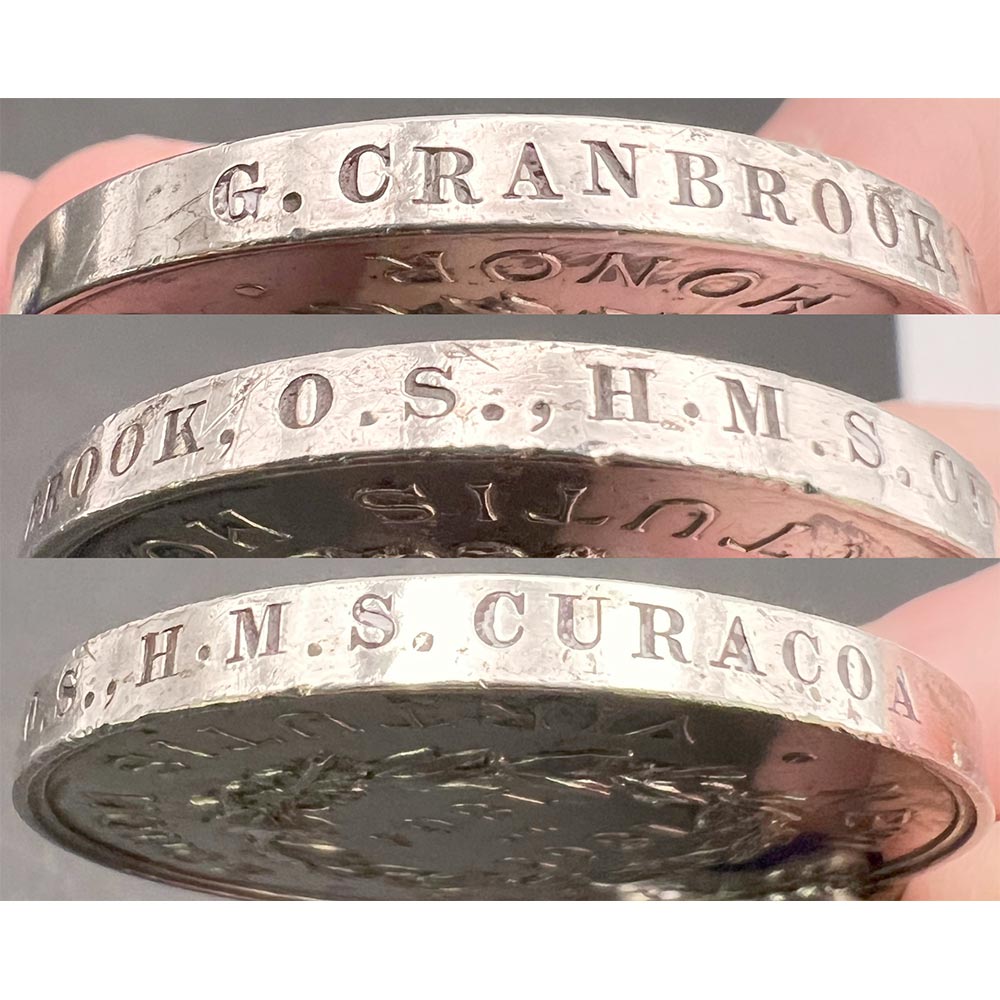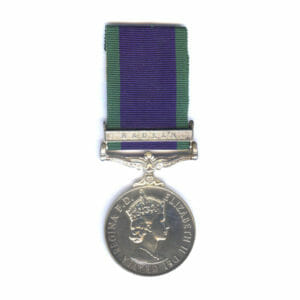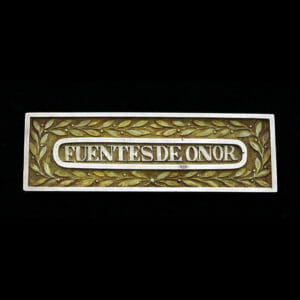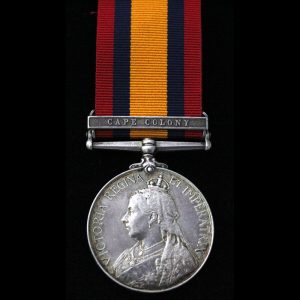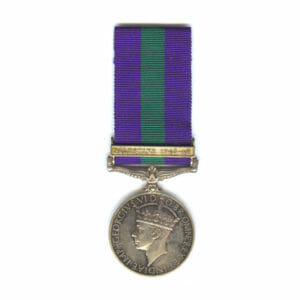Description
New Zealand Medal, dated 1863-1864, George Cranbrook, Royal Navy, HMS Curacao.
Officially impressed: “G. Cranbrook. H.M.S. Curacoa”
Very rare medal to a member of the Royal Navy, only 189 New Zealand Medal with reverse “1863-1864” were issued to HMS Curacoa.
Confirmed on the medal roll, which notes the medal was “Delivered to Party 10th March 1871”, at this point he had paid his way out of the Navy.
With copy service records and ship’s logs entries tracing service.
Notably during the New Zealand “Waikato War”, this ship, the Curacoa was the Flagship of the Australia Station from 20th April 1863 until May 1866.
Curacao Island off the coast of Queensland is named after this ship.
Upon their arrival during the Invasion of Waikato, she supplied from her Ship’s company reinforcements of “Blue Jackets”, for the Naval Brigade at Auckland on 2nd October 1863.
George Cranbrok, was born in Hammersmith, London, on 9th December 1845.
He attested for a 10 years terms of service on 12th March 1861, rated as a Boy 1st Class.
At this point he was only 15 years and 3 months old.
He first saw service as a Boy 2nd Class Onboard HMS Victoria and Albert, from 12th March 1861 – 31st December 1862.
Then he first joined HMS Curacoa, now a Boy 1st Class, on 6th May 1863, as she set off for Australia.
HMS Duke of Wellington, 21st February 1867 – 9th October 1867
HMS Curacoa, 10th October 1867 – 31st December 1867.
Finished off his service on board HMS Minotaur, from 1st January 1868 to 15th June 1870.
Minotaur was a newly launched, which took over 6 years to build and finally get out to sea, Minotaur Class Armoured Frigate, was an early “Iron Clad” ship and was amongst the longest single-crew warships every built.
During this period she was the Flagship of the Channel Squadron.
He had some time left on his contract, but chose to purchase his discharge at Shore on 15th June 1870.
Life outside the navy:
Mr George Cranbrook, was born during 1845, in Hammersmith, Middlesex.
The son of another George Cranbrook (Born 1814 in Chelsea) and Caroline Cranbrook (Born 1824 in Fulham).
His father was an Omnibus Driver for the London Omnibus Company, which George Jnr was also when he got home from the Navy.
Back in those days when they both worked for the Omnibus Company, the iconic Double Decker Red Bus was a littler different, it was still a double decker but pulled along by 2 horses.
As one of the third London Bus Drivers, his father was brought into Court in November 1858, to testify in the important Rival Omnibus Companies conspiracy case between the Metropolitan Saloon Omnibus Company and the London General Omnibus Company.
Returned back to the family home on the 1871 Census, working as an Omnibus Conductor with his Father who as a Driver still.
By the 1881 Census, he had got married to Harriet J. Cranbrook (Born 1846 in Wiveliscombe, Somerset), they had 3 children and a live in Nurse for their baby.
He was working as an Omnibus Conductor, they lived at 15 Heathfield Cottages in Kensington, London.
In 1891 He was still in Kensington, working as a Timekeeper, with his retired father and had another son he named George (Born 1881.)
He later died in Kensington about June 1896.
